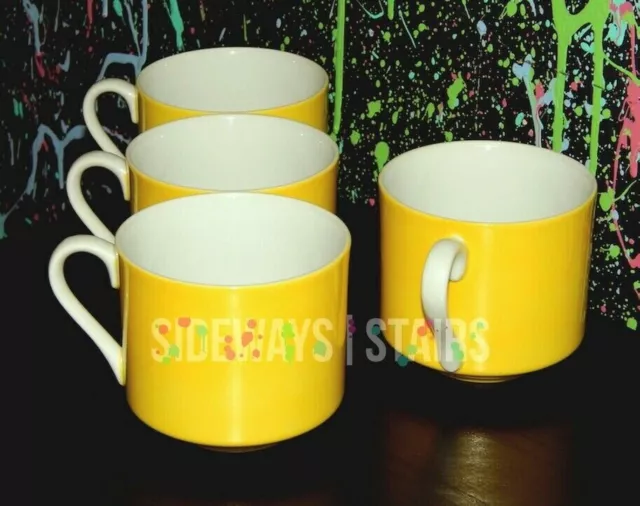VINTAGE FITZ & FLOYD CANARY YELLOW MUGS tea cups coffee papillion mid-century
£38.57 Buy It Now or Best Offer, Click to see shipping cost, eBay Money Back Guarantee
Seller: sidewaysstairsco ✉️ (1,181) 100%,
Location: Santa Ana, California, US,
Ships to: US & many other countries,
Item: 202652460296
VINTAGE FITZ & FLOYD CANARY YELLOW MUGS tea cups coffee papillion mid-century. Check out our other new & used items>>>>>HERE! (click me) FOR SALE: Mid-century modern cup set in a radiant, canary yellow color - circa 1975 FITZ AND FLOYD YELLOW/WHITE BONE CHINA SNACK CUPS DETAILS: Quality product and design from Fitz and Floyd! "Whether it’s a tea service for Her Majesty Queen Elizabeth II, Presidential dinnerware for The White House, a holiday centerpiece for your table, or a first set of dinnerware for your apartment or dorm room, each and every Fitz and Floyd product receives the same discerning attention to meticulous craftsmanship and exquisite detail. " "Fitz and Floyd, a division of Lifetime Brands, Inc., has become synonymous with excellence in design, quality and style for half a century. From style-conscious homes to corporate boardrooms and royal palaces, the Fitz and Floyd look is easily recognized throughout America and much of the world. Over the past 50 years, Fitz and Floyd has evolved into the undisputed leader in the design and manufacture of hand-painted ceramic giftware, dinnerware, tableware, decorative accessories and collectibles. From the drawing board to the sculpting wheel and the kiln, all Fitz and Floyd products are distinctly designed and hand-crafted by skilled Fitz and Floyd artisans. From its renowned US Studios, the Fitz and Floyd design team creates the company’s exclusive designs – nearly 500 new and unique designs each year. Fitz and Floyd – often elegant, sometimes whimsical, always a prized and treasured gift." (fitzandfloyd.com) 2-tone color; yellow exterior, white interior Butterfly wing-shaped handles Made in Japan Hand wash only Cup Dimensions: Rim Diameter: approx. 3 3/16" Height: approx. 2 7/8" Width (with handle): approx. 4 3/16" CONDITION: Pre-owned. Three cups are in very good condition while one is broken and repaired (non-professionally). The forth cup didn't break until after the photos were taken (see photos #6, #7, #8) so what's depicted is the damage/crazing/chipping before the cup cleanly broke into two pieces. After breaking, the cup was glued back together. Though the one cup is broken we decided to include it because it completes the set and it can still act as a decorative piece. All four cups have some rim wear. Please see photos. *To ensure safe delivery, all items are carefully packaged before shipping out.* THANK YOU FOR LOOKING. QUESTIONS? JUST ASK. *ALL PHOTOS AND TEXT ARE INTELLECTUAL PROPERTY OF SIDEWAYS STAIRS CO. ALL RIGHTS RESERVED.* "Bone china is a type of porcelain that is composed of bone ash, feldspathic material, and kaolin. It has been defined as "ware with a translucent body" containing a minimum of 30% of phosphate derived from animal bone and calculated calcium phosphate.[1] Bone china is the strongest of the porcelain or china ceramics, having very high mechanical and physical strength and chip resistance, and is known for its high levels of whiteness and translucency.[2][3] Its high strength allows it to be produced in thinner cross-sections than other types of porcelain.[2] Like stoneware it is vitrified, but is translucent due to differing mineral properties.[4] In the mid-18th century, English potters had not succeeded in making hard-paste porcelain (as made in East Asia and Meissen porcelain) but found bone ash a useful addition to their soft-paste porcelain mixtures, giving strength. This became standard at the Bow porcelain factory in London (operating from around 1747), and spread to some other English factories. The modern product was developed by the Staffordshire potter Josiah Spode in the early 1790s. Spode included kaolin, so his formula, sometimes called "Staffordshire bone-porcelain", was effectively hard-paste, but stronger, and versions were adopted by all the major English factories by around 1815.[5] From its initial development and up to the latter part of the 20th century, bone china was almost exclusively an English product, with production being effectively localised in Stoke-on-Trent.[6] Most major English firms made or still make it, including Fortnum & Mason, Mintons, Coalport, Spode, Royal Crown Derby, Royal Doulton, Wedgwood and Worcester. In the UK, references to "china" or "porcelain" can refer to bone china, and "English porcelain" has been used as a term for it, both in the UK and around the world.... The first development of what would become known as bone china was made by Thomas Frye at his Bow porcelain factory near Bow in East London in 1748. His factory was located very close to the cattle markets and slaughterhouses of Essex, and hence easy access to animal bones. Frye used up to 45% bone ash in his formulation to create what he called "fine porcelain".[6][8] Plate from Ronald Reagan's state service for the White House, by Lenox Later, Josiah Spode in Stoke-on-Trent further developed the concept between 1789 and 1793, introducing his "Stoke China" in 1796. He died suddenly the year later, and his son Josiah II quickly rechristened the ware "Bone china".[9] Among his developments was to abandon Frye's procedure of calcining the bone together with some of the other raw body materials, instead calcining just the bone. Bone china quickly proved to be highly popular, leading to its production by other English pottery manufacturers.[10] Both Spode's formulation and his business were successful: his formulation of 6 parts bone ash, 4 parts china stone and 3.5 parts china clay, remains the basis for all bone china, and it was only in 2009 that his company, Spode, went into receivership before eventually being purchased by Portmeirion.[6][11] Production[edit] The production of bone china is similar to porcelain, except that more care is needed because of its lower plasticity and a narrower vitrification range. The traditional formulation for bone china is about 25% kaolin, 25% Cornish stone and 50% bone ash.[12] The bone ash that is used in bone china is made from cattle bones that have a lower iron content. These bones are crushed before being degelatinised and then calcined at up to 1250 °C to produce bone ash.[13] The ash is milled to a fine particle size.[14] The kaolin component of the body is needed to give the unfired body plasticity which allows articles to be shaped.[2] This mixture is then fired at around 1200 °C.[14] The raw materials for bone china are comparatively expensive, and the production is labour-intensive, which is why bone china maintains a luxury status and high pricing.[6] Bone china consists of two crystalline phases, anorthite (CaAl2Si2O8) and β-tricalcium phosphate/whitlockite (Ca3(PO4)2) embedded in a substantial amount of glass.[15] Production locations[edit] For almost 200 years from its development bone china was almost exclusively produced in the UK. During the middle part of the 20th century manufacturers in other countries began production, with the first successful ones outside the UK being in Japan: Noritake, Nikko and Narumi. [16][17] In more recent years production in China has expanded considerably, and the country is now the biggest producer of bone china in the world. Other countries producing considerable amounts of bone china are Bangladesh, India, Indonesia, Iran[citation needed], Sri Lanka and Thailand.[16][17][18] From the start of the first factory, Bengal Potteries, in 1964, bone china output from Indian factories had risen to 10,000 tonnes per year by 2009. [19] Rajasthan has become a hub for bone china in India, with production in the state totaling 16-17 tonnes per day.[20] Lenox is the only major manufacturer of bone china in the United States[citation needed], and has supplied presidential services to the White House." (wikipedia.org) "Mid-century modern (MCM) is the design movement in interior, product, graphic design, architecture, and urban development that became popular after WWII in 1945 and continued until the late 1970s. The term, employed as a style descriptor as early as the mid-1950s, was reaffirmed in 1983 by Cara Greenberg in the title of her book, Mid-Century Modern: Furniture of the 1950s (Random House), celebrating the style that is now recognized by scholars and museums worldwide as a significant design movement.... The Mid-century modern movement in the U.S. was an American reflection of the International and Bauhaus movements, including the works of Gropius, Florence Knoll, Le Corbusier and Ludwig Mies van der Rohe.[1] Although the American component was slightly more organic in form and less formal than the International Style, it is more firmly related to it than any other. Brazilian and Scandinavian architects were very influential at this time, with a style characterized by clean simplicity and integration with nature. Like many of Wright's designs, Mid-Century architecture was frequently employed in residential structures with the goal of bringing modernism into America's post-war suburbs. This style emphasized creating structures with ample windows and open floor plans, with the intention of opening up interior spaces and bringing the outdoors in. Many Mid-century houses utilized then-groundbreaking post and beam architectural design that eliminated bulky support walls in favor of walls seemingly made of glass. Function was as important as form in Mid-Century designs, with an emphasis placed on targeting the needs of the average American family. Eichler Homes – Foster Residence, Granada Hills In Europe, the influence of Le Corbusier and the CIAM resulted in an architectural orthodoxy manifest across most parts of post-war Europe that was ultimately challenged by the radical agendas of the architectural wings of the avant-garde Situationist International, COBRA, as well as Archigram in London. A critical but sympathetic reappraisal of the internationalist oeuvre, inspired by Scandinavian Moderns such as Alvar Aalto, Sigurd Lewerentz and Arne Jacobsen, and the late work of Le Corbusier himself, was reinterpreted by groups such as Team X, including structuralist architects such as Aldo van Eyck, Ralph Erskine, Denys Lasdun, Jorn Utzon and the movement known in the United Kingdom as New Brutalism. Pioneering builder and real estate developer Joseph Eichler was instrumental in bringing Mid-Century Modern architecture ("Eichler Homes") to subdivisions in the Los Angeles area and the San Francisco Bay region of California, and select housing developments on the east coast. George Fred Keck, his brother Willam Keck, Henry P. Glass, Ludwig Mies van der Rohe, and Edward Humrich created Mid-Century Modern residences in the Chicago area. Mies van der Rohe's Farnsworth House is extremely difficult to heat or cool, while Keck and Keck were pioneers in the incorporation of passive solar features in their houses to compensate for their large glass windows. Mid-century modern in Palm Springs[edit] Miller House, by Richard Neutra The city of Palm Springs, California is noted for its many examples of Mid-century modern architecture.[2][3][4][5][6][7][8] Architects include:[9][10] Welton Becket: Bullock's Palm Springs (with Wurdeman) (1947) (demolished, 1996[11]) John Porter Clark: Welwood Murray Library (1937); Clark Residence (1939) (on the El Minador golf course); Palm Springs Women's Club (1939) William F. Cody: Stanley Goldberg residence;[12] Del Marcos Motel (1947); L'Horizon Hotel, for Jack Wrather and Bonita Granville (1952); remodel of Thunderbird Country Club clubhouse (c. 1953) (Rancho Mirage); Tamarisk Country Club (1953) (Rancho Mirage) (now remodeled); Huddle Springs restaurant (1957); St. Theresa Parish Church (1968); Palm Springs Library (1975) Craig Ellwood: Max Palevsky House (1970) Albert Frey: Palm Springs City Hall (with Clark and Chambers) (1952–57); Palm Springs Fire Station #1 (1955); Tramway Gas Station (1963); Movie Colony Hotel; Kocher-Samson Building (1934) (with A. Lawrence Kocher); Raymond Loewy House (1946); Villa Hermosa Resort (1946); Frey House I (1953); Frey House II (1963); Carey-Pirozzi house (1956); Christian Scientist Church (1957); Alpha Beta Shopping Center (1960) (demolished) Victor Gruen: City National Bank (now Bank of America) (1959)[13] (designed as an homage to the Chapelle Notre Dame du Haut, Ronchamp, by Le Corbusier) A. Quincy Jones: Palm Springs Tennis Club (with Paul R. Williams) (1946); Town & Country Center (with Paul R. Williams) (1947–50); J.J. Robinson House (with Frederick E. Emmons) (1957); Ambassador and Mrs. Walter H. Annenberg House (with Frederick E. Emmons) (1963) William Krisel:[14] Ocotillo Lodge(1957); House of Tomorrow(1962).[15] John Lautner: Desert Hot Springs Motel (1947); Arthur Elrod House (1968) (interiors used in filming James Bond's Diamonds Are Forever); Hope Residence (1973) John Black Lee: Specialized in residential houses. Lee House 1 (1952), Lee House 2 (1956) for which he won the Award of Merit from the American Institute of Architects, Day House (1965), * System House (1961), Rogers House (1957), Ravello (1960) Gene Leedy: The Sarasota School of Architecture, sometimes called Sarasota Modern, is a regional style of post-war architecture that emerged on Florida's Central West Coast. Frederick Monhoff: Palm Springs Biltmore Resort (1948) (demolished, 2003[11]) Richard Neutra (Posthumous AIA Gold Medal honoree): Grace Lewis Miller house (1937) (includes her Mensendlieck posture therapy studio);[16] Kaufman House (1946);[17] Samuel and Luella Maslon House, Tamarisk Country Club, Rancho Mirage (1962) (demolished 2003)[11] William Pereira: Robinson's (1953) William Gray Purcell (with protégé Van Evera Bailey): Purcell House (1933) (cubist modern) Donald Wexler: Steel Developmental Houses,[18] Sunny View Drive (1961). Home developer, Alexander Homes, popularized this post-and-beam architectural style in the Coachella Valley. Alexander houses and similar homes feature low-pitched roofs, wide eaves, open-beamed ceilings, and floor-to-ceiling windows.[5]:66–75 E. Stewart Williams: Frank Sinatra House (1946) (with piano-shaped pool); Oasis commercial building (with interiors by Paul R. Williams) (1952); William and Marjorie Edris House (1954); Mari and Steward Williams House (1956); Santa Fe Federal Savings Building (1958); Coachella Valley Savings & Loan (now Washington Mutual) (1960); Palm Springs Desert Museum (1976) Paul Williams: Palm Springs Tennis Club (with Jones) (1946) Frank Lloyd Wright, Jr.: Oasis Hotel (1923) Walter Wurdeman: Bullock's Palm Springs (with Welton Becket) (1947) (demolished 1996)[11] Examples of 1950s Palm Springs motel architecture include Ballantines Movie Colony (1952) – one portion is the 1935 Albert Frey San Jacinto Hotel – the Coral Sands Inn (1952), and the Orbit Inn (1957).[19] Restoration projects have been undertaken to return many of these residences and businesses to their original condition.[20] Industrial design[edit] Scandinavian design was very influential at this time, with a style characterized by simplicity, democratic design and natural shapes. Glassware (Iittala – Finland), ceramics (Arabia – Finland), tableware (Georg Jensen – Denmark), lighting (Poul Henningsen – Denmark), and furniture (Danish modern) were some of the genres for the products created. In America, east of the Mississippi, the American-born Russel Wright, designing for Steubenville Pottery, and Hungarian-born Eva Zeisel designing for Red Wing Pottery and later Hall China created free-flowing ceramic designs that were much admired and heralded in the trend of smooth, flowing contours in dinnerware. On the West Coast of America the industrial designer and potter Edith Heath (1911–2005) founded Heath Ceramics in 1948. The company was one of the numerous California pottery manufacturers that had their heyday in post-war US, and produced Mid-Century modern ceramic dish-ware. Edith Heath's "Coupe" line remains in demand and has been in constant production since 1948, with only periodic changes to the texture and color of the glazes.[21] Social medium[edit] Printed ephemera documenting the mid-century transformations in design, architecture, landscape, infrastructure, and entertainment include mid-century linen post cards from the early 1930s to the late 1950s. Mid-century linen post cards came about through innovations pioneered through the use of offset lithography. The cards were produced on paper with a high rag content, which gave the post card a textured look and feel. At the time this was a less expensive process. Along with advances in printing technique, mid-century linen postcards allowed for very vibrant ink colors. The encyclopedic geographic imagery of mid-century linen post cards suggests popular middle class attitudes about nature, wilderness, technology, mobility and the city during the mid-20th century.[22] Curt Teich in Chicago[23] was the most prominent and largest printer and publisher of Linen Type postcards[24] pioneering lithography with his "Art Colortone" process.[25] Other large publishers include Stanley Piltz in San Francisco, who established the "Pictorial Wonderland Art Tone Series", Western Publishing and Novelty Company in Los Angeles and the Tichnor Brothers in Boston.[26] The printing of mid-century linen post cards began to give way in the late 1950s to Kodachrome and Ektachrome color prints." (wikipedia.org) " A teacup is a cup for drinking tea. It may be with or without a handle, generally a small one that may be grasped with the thumb and one or two fingers. It is typically made of a ceramic material. It is usually part of a set, composed of a cup and a matching saucer or a trio that includes a small cake or sandwich plate. These in turn may be part of a tea set in combination with a teapot, cream jug, covered sugar bowl and slop bowl en suite. Teacups are often wider and shorter than coffee cups. Cups for morning tea are conventionally larger than cups for afternoon tea. Better teacups typically are of fine white translucent porcelain and decorated with patterns that may be en suite with extensive dinner services. Some collectors acquire numerous one-of-a-kind cups with matching saucers. Such decorative cabinet cups may be souvenirs of a location, person, or event. Such collectors may also accumulate silver teaspoons with a decorated enamel insert in the handle, with similar themes. In the culture of China teacups are very small, normally holding no more than 30ml of liquid. They are designed to be used with Yixing teapots or Gaiwan.[1] Countries in the Horn of Africa like Eritrea also use the handleless cups to drink boon which is traditional coffee there. In Russian-speaking cultures and West Asian cultures influenced by the Ottoman Empire tea is often served in a glass held in a separate metal container with a handle, called a zarf. or in Russian a podstakannik. The first small cups specifically made for drinking the beverage tea when it was newly seen in Europe in the 17th century were exported from the Japanese port of Imari or from the Chinese port of Canton. Tea bowls in the Far East did not have handles, and the first European imitations, made at Meissen, were without handles, too. At the turn of the 19th century canns of cylindrical form with handles became a fashionable alternative to bowl-shaped cups. The handle on a teacup was an explicitly German invention in 1707, by Johann Friedrich Bottger, to solve the freshness issue.[citation needed] Unicode codepoints U+1F375 🍵 TEACUP WITHOUT HANDLE[2] and U+26FE ⛾ CUP ON BLACK SQUARE[3] portray a teacup. U+2615 ☕ HOT BEVERAGE is often rendered as a teacup." (wikipedia.org) " A mug is a type of cup typically used for drinking hot beverages, such as coffee, hot chocolate, soup, or tea. Mugs usually have handles[1] and hold a larger amount of fluid than other types of cup. Typically, a mug holds approximately 8-12 US fluid ounces (350 ml) of liquid.[2] A mug is a less formal style of drink container and is not usually used in formal place settings, where a teacup or coffee cup is preferred. Shaving mugs are used to assist in wet shaving. Ancient mugs were usually carved in wood or bone, ceramic or shaped of clay, while most modern ones are made of ceramic materials such as bone china, earthenware, porcelain, or stoneware. Some are made from strengthened glass, such as Pyrex. Other materials, including enameled metal, plastic, or steel are preferred, when reduced weight or resistance to breakage is at a premium, such as for camping. A travel mug is insulated and has a cover with a small sipping opening to prevent spills. Techniques such as silk screen printing or decals are used to apply decorations such as logos or images and fanart, which are fired onto the mug to ensure permanence.... History[edit] Early mugs[edit] A mug made on a potter wheel in the Late Neolithic Period (ca. 2500–2000 BCE) in Zhengzhou, China Wooden mugs were produced probably from the earliest days of woodworking, but most of them have not survived intact.[3][4] The first pottery was shaped by hand and was later facilitated by the invention of the potter's wheel (date unknown, between 6,500 and 3000 BCE). It was relatively easy to add a handle to a cup in the process thus producing a mug. For example, a rather advanced, decorated clay mug from 4000–5000 BCE was found in Greece.[5] Ancestral Pueblo (Anasazi) mugs from SW Colorado, made between 1000 and 1280 CE. The meaning of the carving in the handles is as yet unknown, but it is probably not functional. The biggest disadvantage of those clay mugs was thick walls unfit for the mouth. The walls were thinned with development of metalworking techniques. Metal mugs were produced from bronze,[6] silver, gold,[7] and even lead,[8] starting from roughly 2000 BCE, but were hard to use with hot drinks. The invention of porcelain around 600 CE in China brought a new era of thin-walled mugs suitable both for cold and hot liquids, which are enjoyed today.[3][9] Shaving mugs and scuttles[edit] Shaving mug A shaving scuttle and shaving mug were developed around the 19th century; the first patent for a shaving mug is dated 1867.[10] As hot water was not common in many households, one way to provide hot lather was to use a scuttle or mug. A traditional scuttle resembles a teapot with a wide spout where hot water is poured in; this is where it differs from a shaving mug, which has no spout. Both shaving scuttles and mugs usually have a handle, but some have none. Shaving mugs often look like a standard mug, however, some also have a built in brush rest, so the brush does not sit in lather. Modern versions of the scuttle are in limited production, usually by independent potters working in small volumes.[11] Shaving scuttle, 1867 patent.[10] At the top of the scuttle or mug is a soap holder. Traditionally, it was used with a hard block of shaving soap (rather than soft soap or cream) and therefore had drain holes at the bottom. Later scuttles and mugs do not include the holes, and thus can be used with creams and soft soaps. Some scuttles and mugs have concentric circles on the bottom, which retain some water thus helping to build lather.[11] In use, the shaving brush is dunked into the wide spout, allowing it to soak into the water and heat up. The soap is placed in the soap holder. When needed, one can take the brush and brush it against the soap, bringing up a layer of lather; excess water is drained back. This allows conservation of water and soap, whilst retaining enough heat to ensure a long shave. Tiki mugs[edit] Main article: Tiki mugs Tiki mugs Tiki mugs, drinking vessels usually made of ceramics, originated in mid-20th century tropical themed restaurants and tiki bars. The term "Tiki mugs" is a generic, blanket term for sculptural drink ware that depict imagery from Melanesia, Micronesia, or Polynesia, and more recently anything tropical or related to surfing. Often sold as souvenirs, tiki mugs are highly collectable. Modern manufacturers include Muntiki and Tiki Farm. Individual artists, such as Van Tiki, also produced limited one-of-a-kind hand sculpted mugs.[12] Travel mugs[edit] Travel mug Travel mugs (introduced in the 1980s) generally employ thermal insulation properties for transporting hot or cold liquids. Similar to a vacuum flask, a travel mug is usually well-insulated and completely enclosed to prevent spillage[13] or leaking, but will generally have an opening in the cover through which the contents can be consumed during transportation without spillage. As the primary mechanism by which hot (not warm) beverages lose heat is evaporation a lid, even a thin plastic one as used on disposable coffee cups which conducts heat quite quickly, also serves a vital role in keeping the drink hot. Mugs with inner and outer walls, but not vacuum treated, are generally called double wall mugs. Usually stainless steel will be used for the inner wall while outer wall can be stainless steel, plastic, or even embedded with other materials. Travel mug[13] Mugs designed for use when driving are called auto mugs or commuter mugs. Travel mugs have a spill-proof lid with a sipping opening[14] and in many cases, a narrower base, so that they will fit into the cup-holders that are built into many vehicles.[citation needed] Additional criteria for evaluating auto mugs include: they must be easy to open single-handedly (to prevent distractions while driving), include a fill line (to prevent over-filling, which contributes to leaking), preferably have no handles (no-handled mugs are easier to grab while driving), should not obstruct a driver's view of the road when he or she is drinking, and - with regard to cup-holders be able to fit, stably, into a wide range of mug holders.[15][16][17] Other types of mugs[edit] Amusement mugs[edit] The whistle mug or hubblebubble is an amusement mug. It has a hollow handle which can be blown through the mug like a whistle. With an empty mug, only one note is emitted, whereas a filled mug produces melodious trills and warblings.[18] Puzzle mugs[edit] A Pythagorean cup Fuddling cups. The cups have hollow interconnections that allow the contents to be drunk without spilling. A puzzle mug is a mug which has some trick preventing normal operation. One example is a mug with multiple holes in the rim, making it impossible to drink from it in the normal way. Although it is tempting to grasp the body of the mug covering the visible holes and drink the liquid in the usual manner, this would pour the liquid through hidden perforations near the mug's top. The solution is to cover the holes in the rim with hands, but to drink not through the top, but through a "secret" hole in the hollow handle.[18] A puzzle mug called fuddling cups consists of three mugs connected through their walls and handles. The inner holes in the mugs walls are designed in such a way that the mugs must be emptied in a unique sequence, or they will drain.[18] The Pythagorean cup (see picture) contains a small siphon hidden in a rod placed in the mug center. The cup holds liquid if filled below the height of the rod, but once filled above that level, it drains all liquid through the siphon to a hole in its base. Heat changing mugs[edit] File:Thermochromic mug.webm Video of hot water being poured into a "magic mug" and the subsequent colour change Heat changing, heat sensitive, or magic mugs make use of thermochromism to change appearance when a hot beverage is poured into them. General design and functions[edit] Much of the mug design aims at thermal insulation: the thick walls of a mug, as compared to the thinner walls of teacups, insulate the beverage to prevent it from cooling or warming quickly. The mug bottom is often not flat, but either concave or has an extra rim, to reduce the thermal contact with the surface on which a mug is placed. These features often leave a characteristic circular stain on the surface. Finally, the handle of a mug keeps the hand away from the hot sides of a mug. The small cross section of the handle reduces heat flow between the liquid and the hand. For the same reason of thermal insulation, mugs are usually made of materials with low thermal conductivity, such as earthenware, bone china, porcelain, or glass.[19][20] Decoration[edit] See also: Transfer printing Smashed mug As a ubiquitous desktop item, the mug is often used as an object of art or advertisement; some mugs are rather decorations than drinking vessels. Carving had been traditionally applied to mugs in the ancient times. Deforming a mug into an unusual shape is sometimes used. However, the most popular decoration technique nowadays is printing on mugs, which is usually performed as follows: Ceramic powder is mixed with dyes of chosen color and a plasticizer. Then it is printed on a gelatin-coated paper using a traditional screen-printing technique, which applies the mixture through a fine woven mesh, which is stretched on a frame and has a mask of desired shape. This technique produces a thin homogeneous coating; however, if smoothness is not required, the ceramic mixture is painted directly with a brush. Another, more complex alternative is to coat the paper with a photographic emulsion, photoprint the image and then cure the emulsion with ultraviolet light.[21] After drying, the printed paper, called a litho, can be stored indefinitely. When a litho is applied to the mug, it is first softened in warm water. This detaches the gelatin cover, with the printed image, from the paper; this cover is then transferred to the mug. The mug is then fired around 700–750 °C, which softens the top surface of the glaze, thereby embedding the image into it.[21] Storage[edit] Mug rack on a ship Mug tree A popular way to store mugs is on a 'mug tree', a wooden or metal pole mounted on a round base and fitted with pegs to hang mugs by their handles.[22] There are also racks designed for hanging mugs so that they are ready to hand. Those are especially useful on ships in high waves." (wikipedia.org)
- Condition: Used
- Condition: Pre-owned. 3 in very good condition; 1 is broken and glued. Please see description and photos.
- Style: Mid-Century Modern
- Pattern: Papillion Yellow
- Color: Yellow
- Brand: Fitz and Floyd
- Original/Licensed Reproduction: Original
- Model: Papillion
- Original/Reproduction: Vintage Original
- Type: Coffee/Tea Cup Set
PicClick Insights - VINTAGE FITZ & FLOYD CANARY YELLOW MUGS tea cups coffee papillion mid-century PicClick Exclusive
- Popularity - 19 watchers, 0.0 new watchers per day, 1,833 days for sale on eBay. Super high amount watching. 0 sold, 1 available.
- Best Price -
- Seller - 1,181+ items sold. 0% negative feedback. Great seller with very good positive feedback and over 50 ratings.
People Also Loved PicClick Exclusive

3 Fitz and Floyd Canary Yellow White Handle Coffee Mug Tea Cup Vintage Retro MCM
£36.65 Buy It Now 17d 12h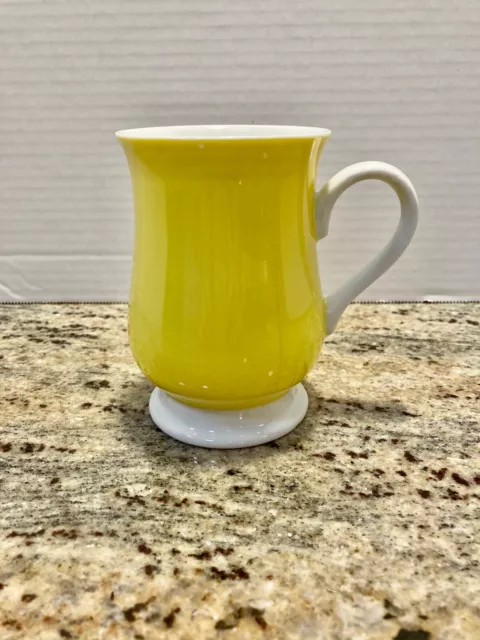
Fitz and Floyd Yellow & White Mug Cup Pedestal Footed MCMLXXV 1975 Vintage
£23.15 Buy It Now 11d 17h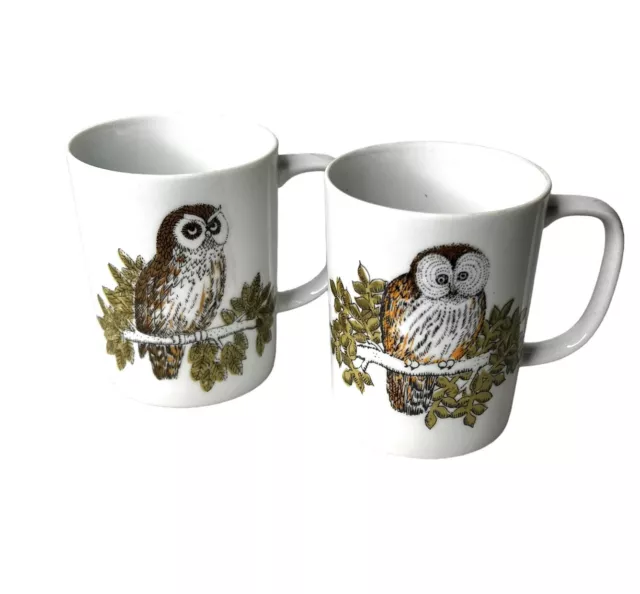
Fitz and Floyd Speckled Owls Coffee Mugs Cups Vintage Mid Century Modern
£11.57 Buy It Now 28d 8h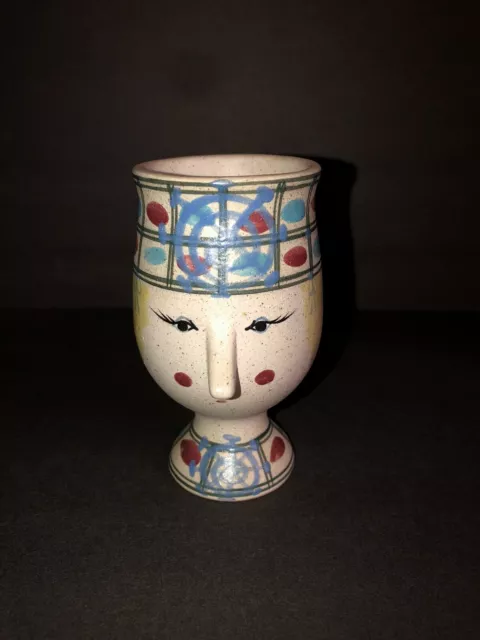
Bjorn Wiinblad Art Pottery Face Mug. vintage, mid century Fitz And Floyd
£9.65 Buy It Now 14d 10h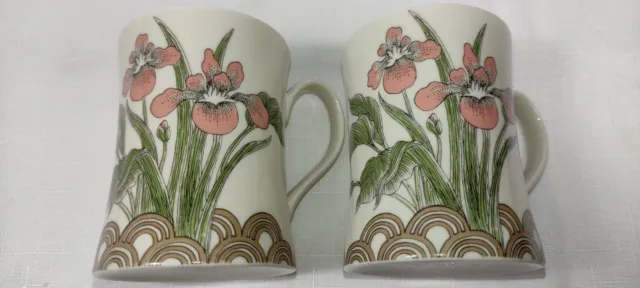
Vintage Porcelain Fitz Floyd Pink Water Iris Coffee Tea Cups Mugs 1978 Set of 2
£33.76 Buy It Now 23d 18h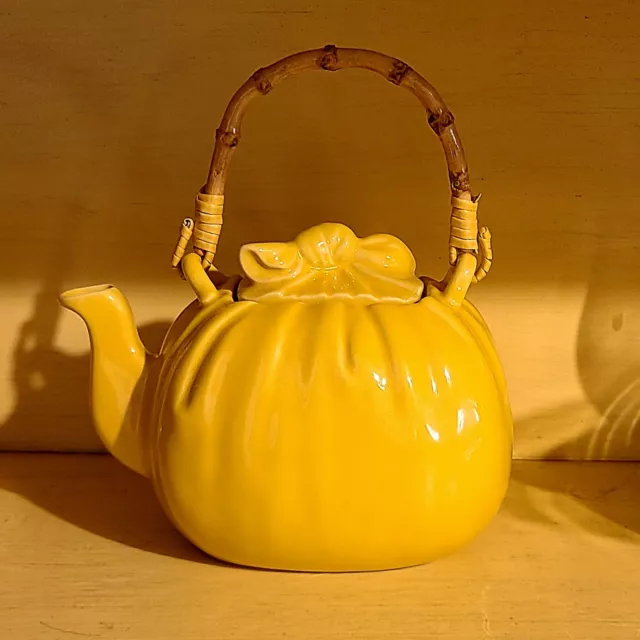 1 watcher
1 watcherFitz and Floyd Vintage Japanese Teapot, Canary Yellow With Bow/Knot On Lid
£41.46 Buy It Now or Best Offer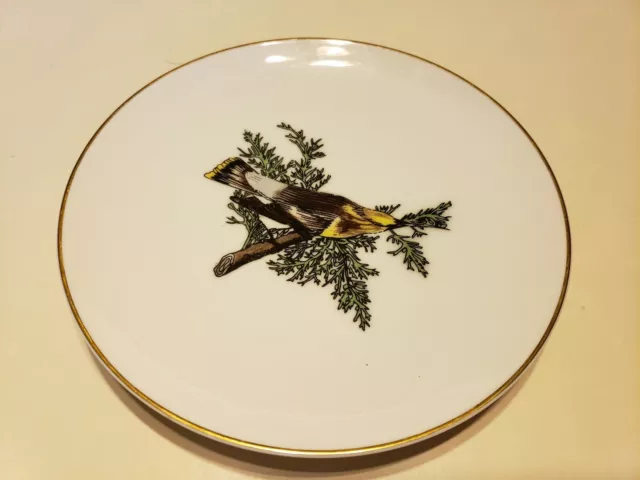 1 watcher
1 watcherNeiman Marcus Bird plate made by Fitz & Floyd Yellow Canary?
£9.63 Buy It Now or Best Offer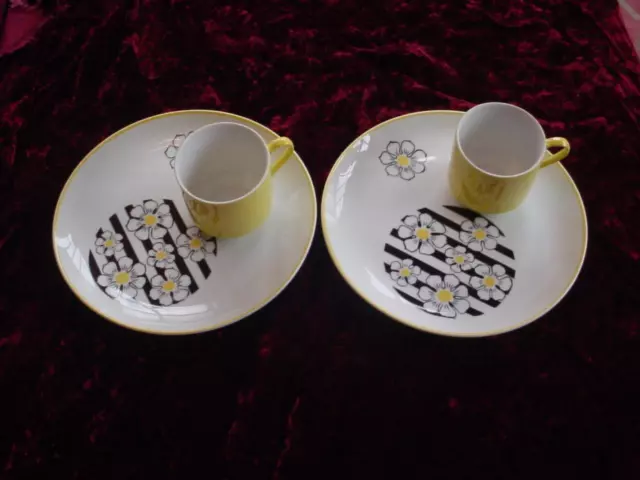
(2) Vintage retro snack cup & plates canary yellow flower motif Fitz Floyd?
£42.44 Buy It Now or Best Offer
